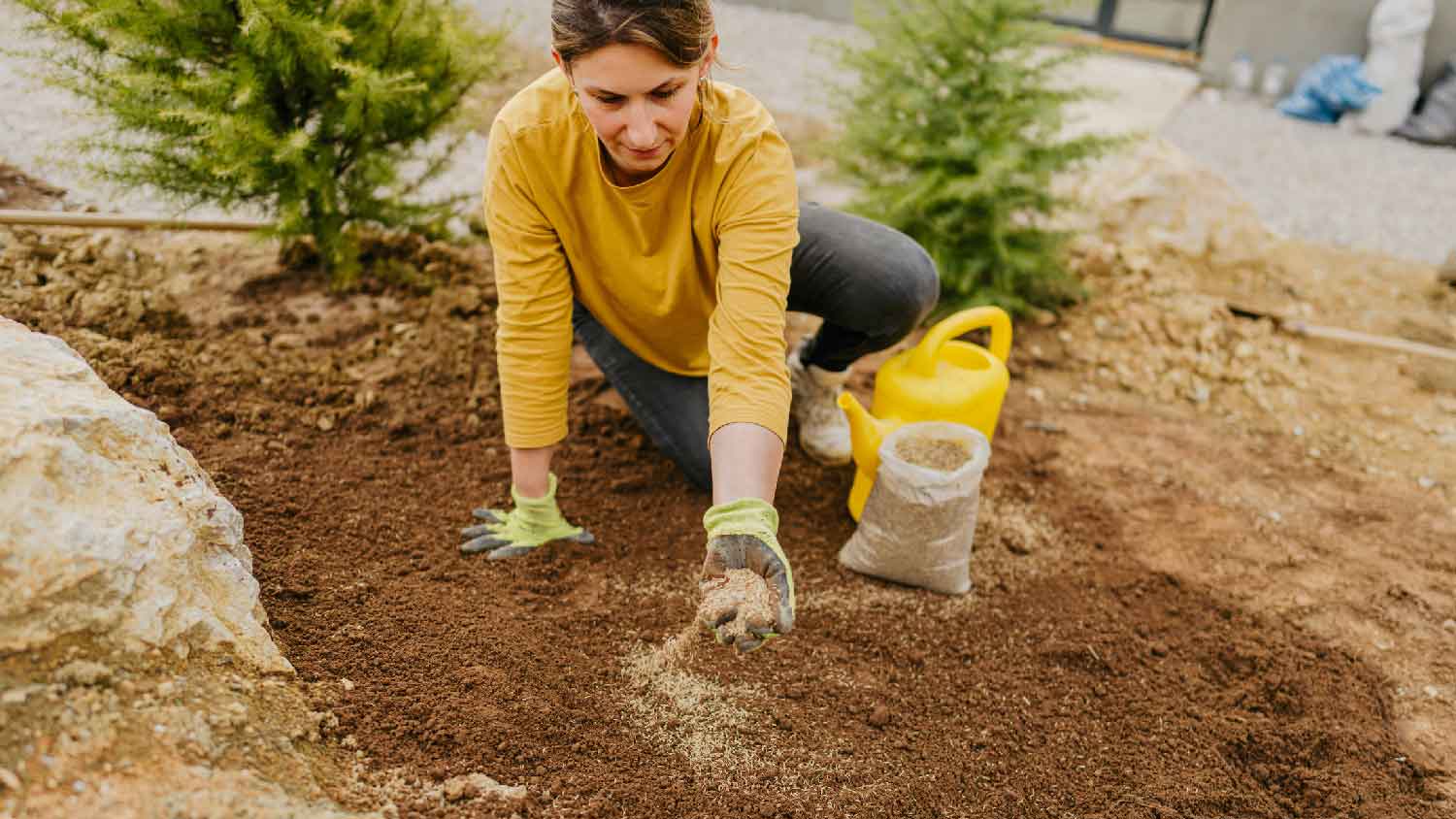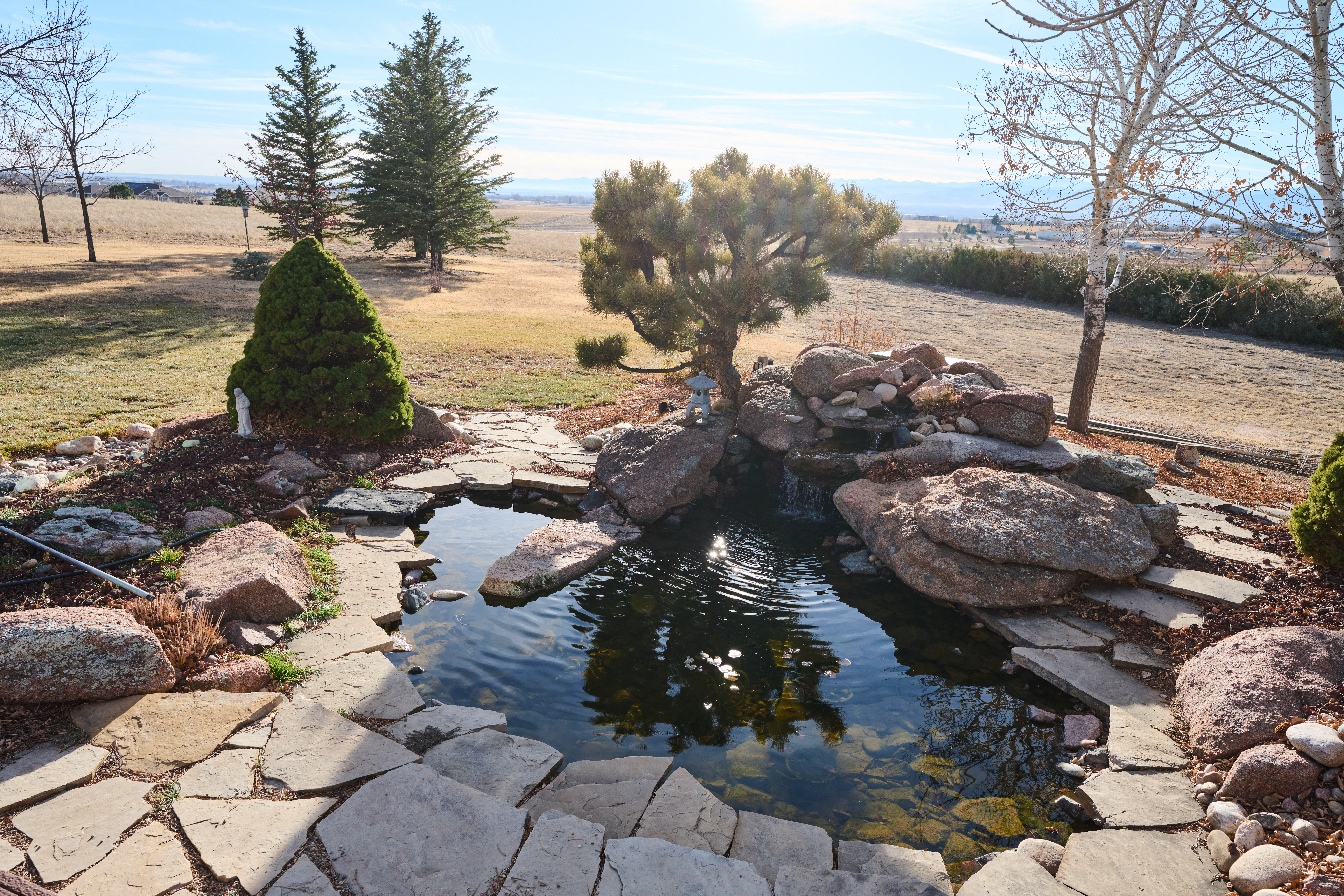
Railroad tie retaining wall costs can vary widely, so getting an accurate estimate for your needs is a good idea to set your budget appropriately.
Grass seeds get thirsty, but don’t drown them


Start with two to three daily watering sessions of 10 to 15 minutes.
You eventually need to scale back to 20- to 30-minute sessions every other day.
Soil composition, grass type, temperature, and rainfall affect how long you need to water the grass.
Whether you just converted a dirt patch into turf or planted new grass seeds into your existing lawn, it's not a "set it and forget it" situation. Grass seeds need water to grow like any other plant. They'll dry up and become expensive bird seed without sufficient water but will drown if they're over-watered. So, how long should you water grass after seeding? Let’s look at common guidelines and some things that may impact watering time for your grass.

How long you should water the grass depends on how long it’s been since seeding. At most growth stages, 20 to 30 minutes every other day is the sweet spot. However, you may need to water for about 10 to 15 minutes multiple times a day in the first two weeks after planting the seeds. Watering sessions could also take longer, or be shorter, depending on the quality of soil the grass grows in, what types of grass you’re growing, rainfall, and the nuances of your local climate.
What ultimately decides the duration and how many times per day you need to water the grass throughout it is how quickly the new grass seeds germinate. There are some standard guidelines that are pretty safe to follow if you’re unsure. You can also reach out to a local sprinkler installer for tips specific to your area and some advice on setting up a sprinkler system to make the process easier.
| Weeks After Seeding | Frequency | Duration of Watering |
|---|---|---|
| 1–2 | Two to three times daily | 10 to 15 minutes |
| 3–4 | Twice daily | 20 to 30 minutes |
| 5–8 | Every other day, weather-dependent | 20 to 30 minutes |
| 9+ | Three times a week, weather-dependent | 20 minutes |
Depending on where you live, the grass may be cool-season, warm-season, or mixed. Most types of grass in the northern United States are cool-season grasses, like fescues. The southern United States is home to warm-season grasses like carpetgrass, but many regions are in a transition zone that has mixed types.
This type of grass greatly affects when you should plant the seeds and how soon they germinate. Common cold-season grasses like perennial ryegrass only need five to 10 days to germinate, and hard fescues need seven to 14 days. In contrast, warm-season grasses like buffalograss and Kentucky bluegrass need 14 to 30 days to germinate. The University of California found that cool-season grasses need 20% more water than warm-season grasses, which can equate to longer or more frequent watering sessions.
Warm-season grass seed should be planted in late spring, early summer, or early fall. Cool-season grasses should be planted in the spring or fall. Regular watering is important during the germination phase, but cool-season grasses are more resilient if you forget to water them for a few days.
If you live in a mixed zone with both warm- and cool-season grasses, extra care is needed to test how long your grass should be watered to avoid both drought and waterlogging.
When your new grass is just starting to germinate after planting, this is when you need to give it the most attention. The soil should be moist like a fresh sponge cake, not muddy. In those first two weeks, start with 10- to 15-minute watering sessions two or three times a day. Scale back to 5 to 10 minutes if the soil seems too wet.
The goal is to prevent water from evaporating without drowning the seeds, so it's ideal to water the grass early in the morning and late in the afternoon. Programmable sprinkler systems make this a snap. If you have enough humidity, twice a day should be fine. If you live in an arid climate, an extra watering session doesn't hurt.
Once the grass is sprouting in the third and fourth weeks post-germination, the watering sessions should be longer. Growing seedlings are thirsty, so 20 to 30 minutes per session is a good baseline.
Once the seedlings turn into young blades of grass, the watering sessions should stay at this duration but can be done every other day now. If it's especially rainy, you can turn the sprinklers off more often.
After that ninth or 10th week, the grass finishes growing and can now go into cruise control-style watering. It only needs to be watered three times a week for 20 minutes per day, possibly twice a week if it's been rainy.
Want some more tips on how to make sure you have the healthiest grass possible? We’ve got you.
Water can quickly evaporate on new grass seed, so lightly spread some straw mulch prior to watering. Too much topsoil will suffocate the seeds, but some mulch helps keep it moist.
The soil should be moist like homemade cake, not muddy. Watering the grass seeds too often can wash them away.
Adjust your watering schedule if the weather is wetter than usual.
Take advantage of the scheduling features on sprinkler systems, but don’t forget to walk out and check how your yard is doing every so often so that you can adjust as needed.
From average costs to expert advice, get all the answers you need to get your job done.

Railroad tie retaining wall costs can vary widely, so getting an accurate estimate for your needs is a good idea to set your budget appropriately.

What are average sod installation prices? Learn how much sod costs based on factors like square footage, land prep, land condition, and more.

How much does hardscaping cost project by project? Check out our breakdown for every price tag you need to know, from outdoor fireplaces to patios.

Will vinegar kill grass and weeds? Get the scoop on what vinegar does to grass, when to use it, and things to consider.

Preparing your pond for the winter can keep it healthy until springtime. Learn how to winterize a pond with this how-to guide.

There are several ways to remove a lilac bush, including root removal and chemical intervention. Check out our guide to learn how to remove a lilac bush.